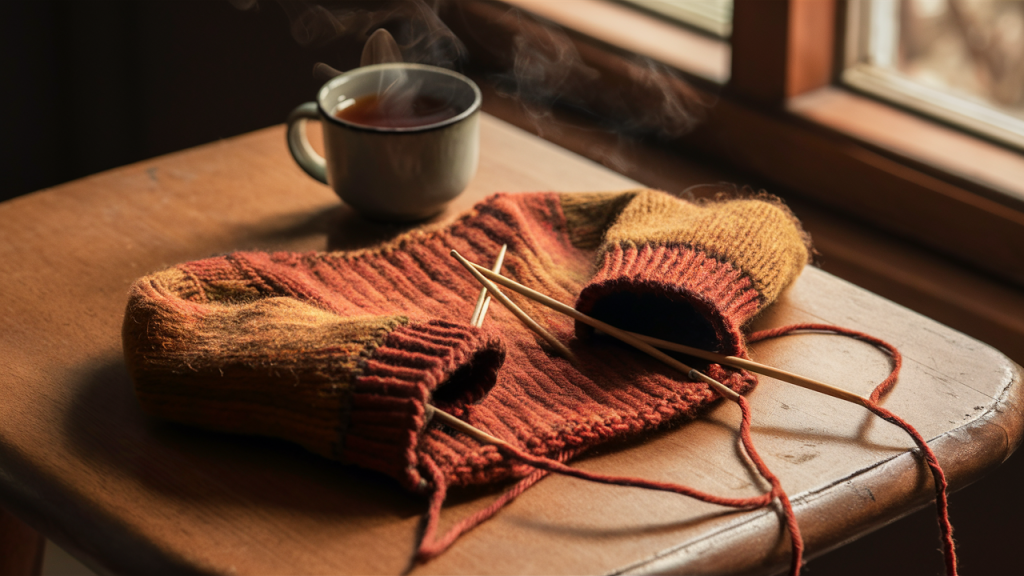Knitting a sweater takes time, patience, and the right tools. One of the most important tools? Your knitting needles.
The wrong needles can slow you down, strain your hands, or make your stitches too tight or loose. The right ones make the process smoother and more enjoyable.
But how do you choose with so many options—straight, circular, metal, wood? In this guide, you’ll find:
- The best needle types for sweaters
- How Needle Material Affects Your Knitting
- What size works best for your yarn
- Tips for comfortable knitting
I’ll help you pick the perfect needles so your sweater turns out just right. There is no fluff, just clear advice. Let’s get started.
Types of Knitting Needles
Not all knitting needles are the same. Some work better for big projects, others for small details. The right choice can make your sweater knitting faster, easier, and more enjoyable.
1. Straight Needles
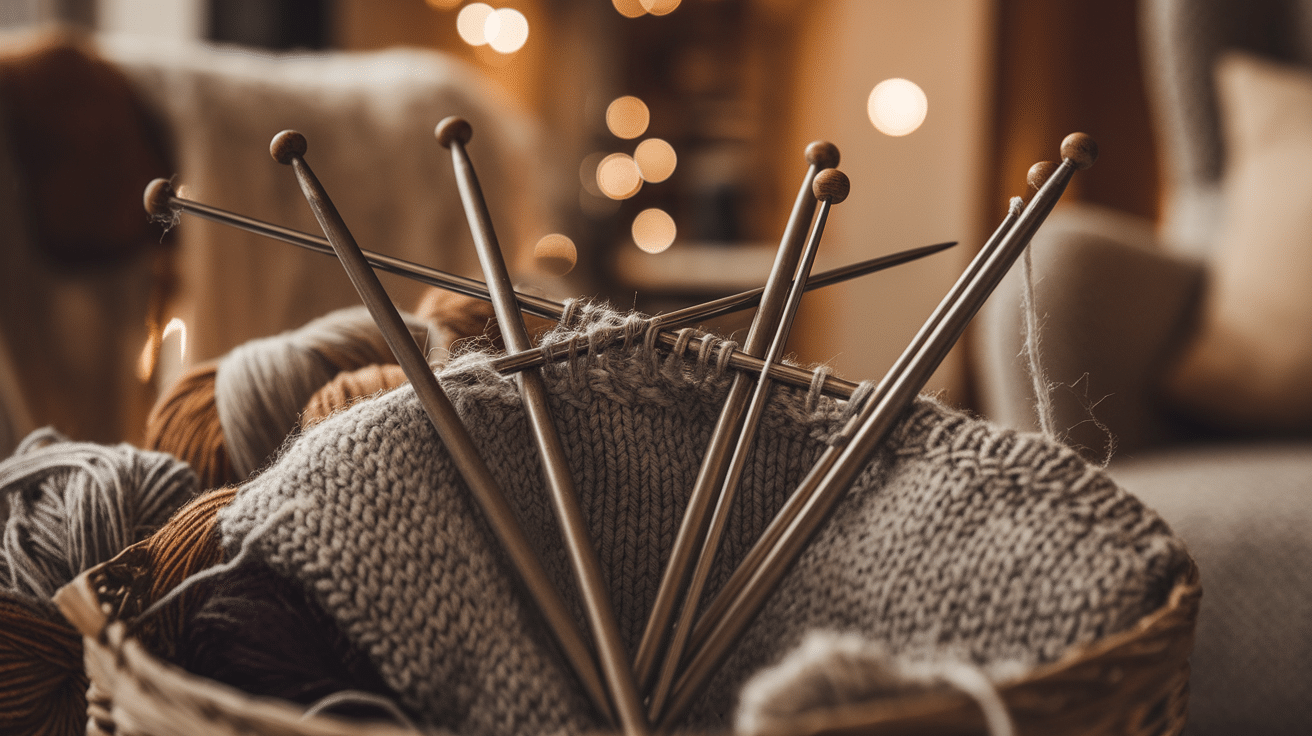
These are the classic knitting needles—long, straight, and with a stopper on one end. They’re great for knitting flat pieces like sweater panels.
Straight needles work well if your pattern calls for knitting separate front and back pieces.
Unique features:
- Best for flat knitting.
- Usually 10 to 14 inches long.
- It can feel heavy for large projects.
2. Circular Needles
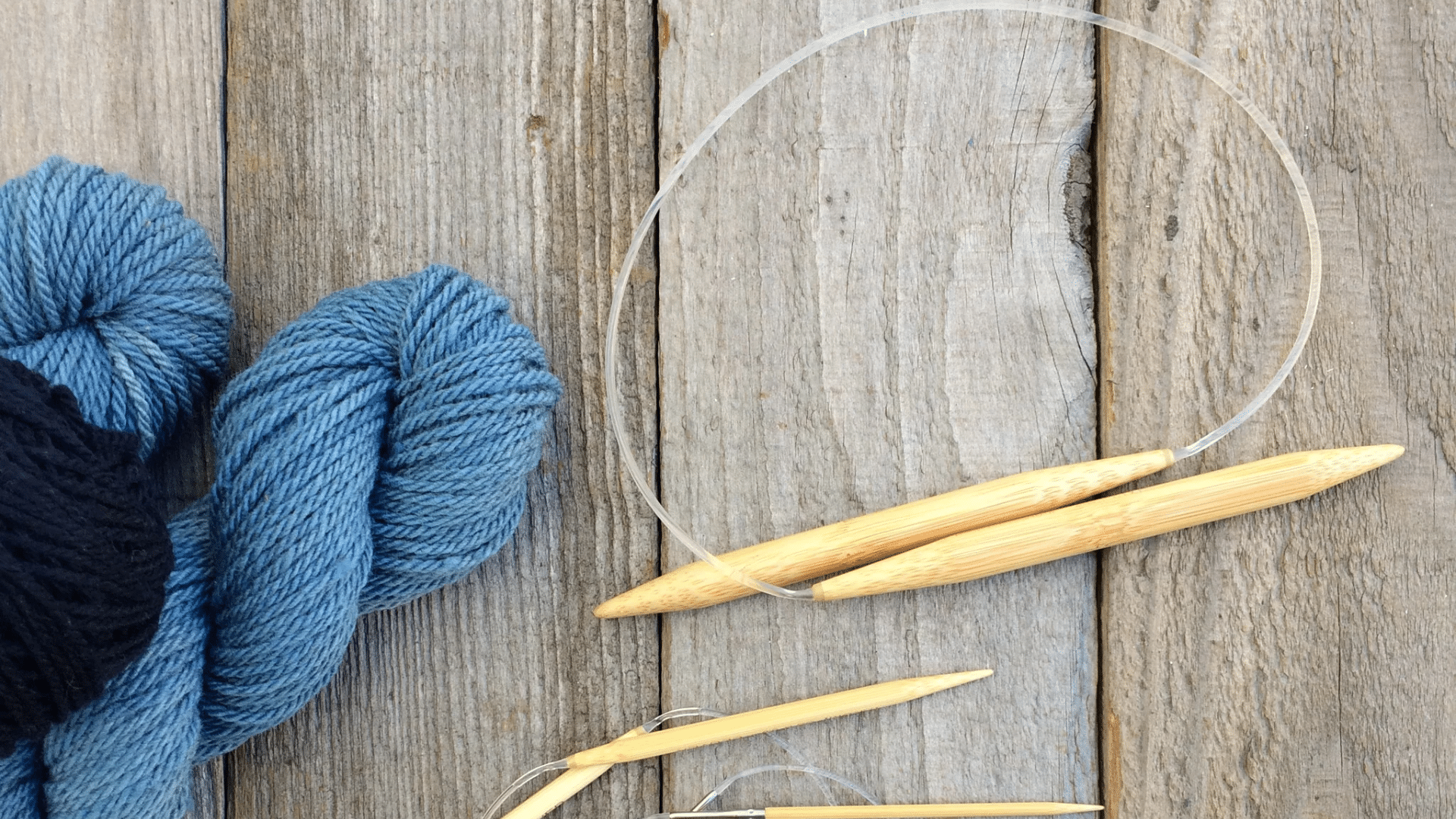
These are my go-to sweaters. They have two short needle tips connected by a flexible cord. Circular needles let you knit in the round, meaning fewer seams and less finishing work.
They also hold more stitches, making them great for large projects.
Unique features:
- Ideal for seamless sweaters.
- Available in fixed or interchangeable sets.
- It can be used for flat knitting, too.
3. Double-Pointed Needles
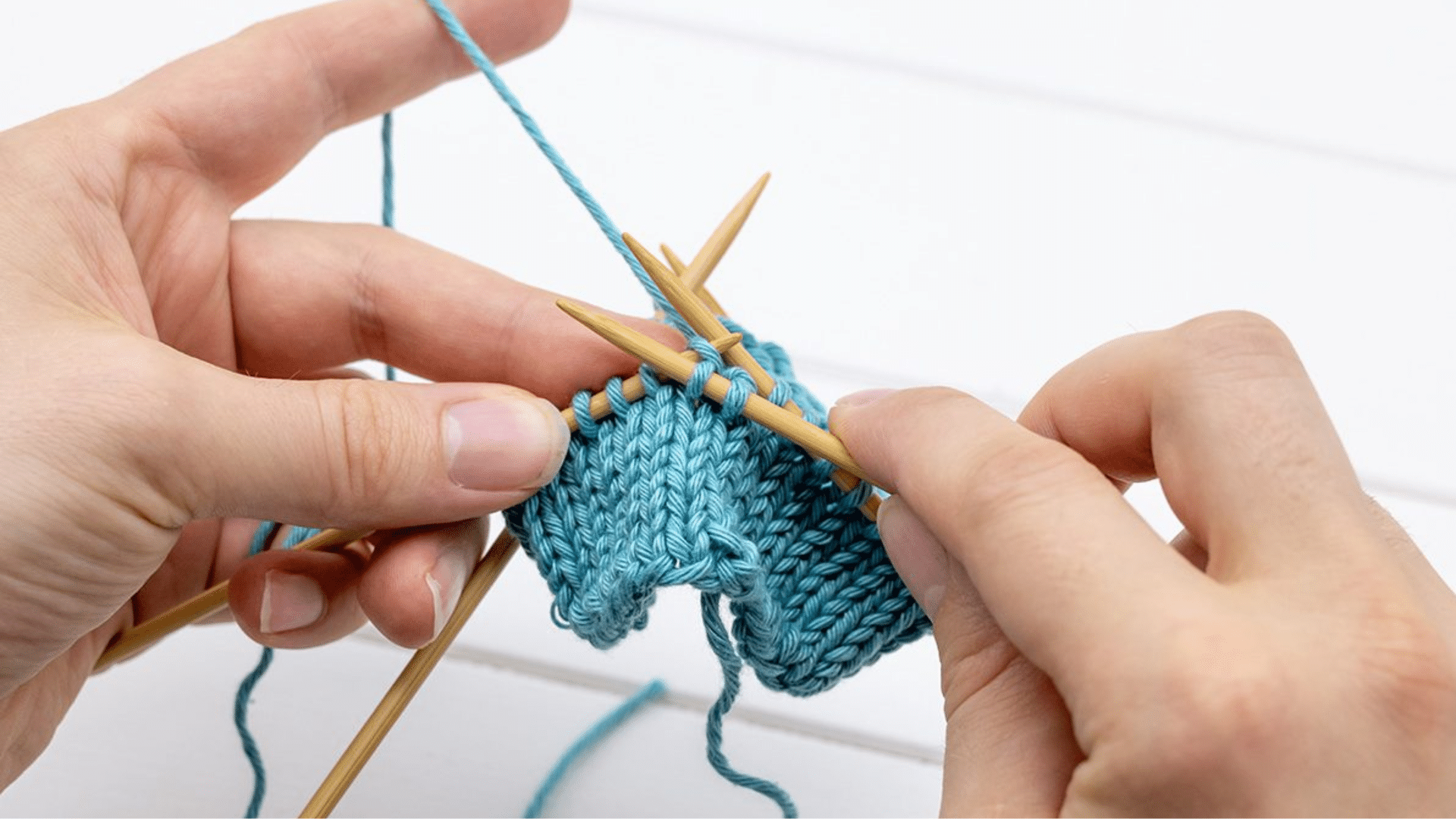
DPNs are short needles with points on both ends. They’re made for knitting small, round sections like sleeves or cuffs. If you’re shaping a sweater sleeve or working on small details, DPNs give you more control.
Unique features:
- Used for small, circular knitting.
- Come in sets of four or five.
- It can be tricky for beginners.
Each type has its place. The best one depends on what you’re knitting and how you like to work.
Best Needle Materials for Sweaters
Needles aren’t just about shape. The material matters, too. It affects how your yarn moves, how your hands feel, and even how fast you knit.
So, which one is best for sweaters? That depends on your style and comfort. Let’s break it down.
1. Bamboo
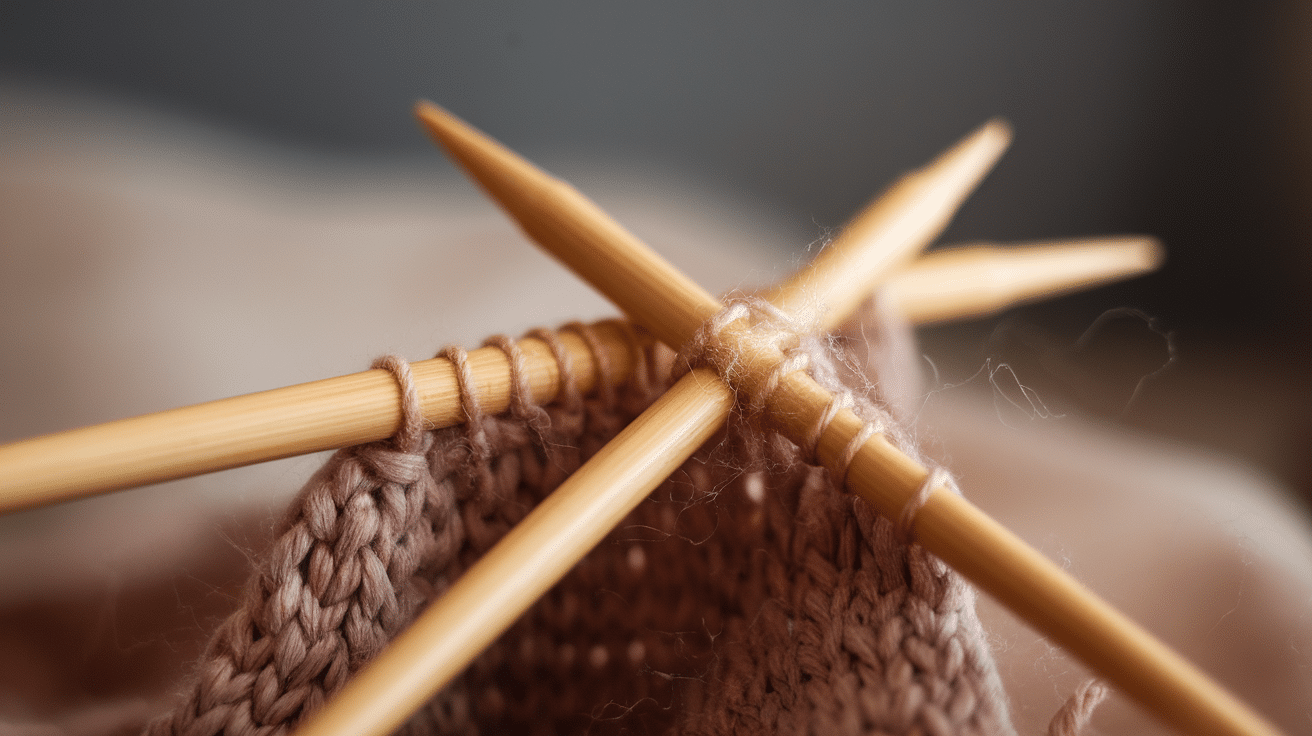
Bamboo needles are soft, warm, and light.They are a great choice if you like a gentle grip on your stitches. They also help prevent slippery yarn from sliding off, making them perfect for beginners or delicate fibers.
Unique features:
- Warm to the touch.
- It’s less slippery than metal.
- It can slow down fast knitters.
2. Metal
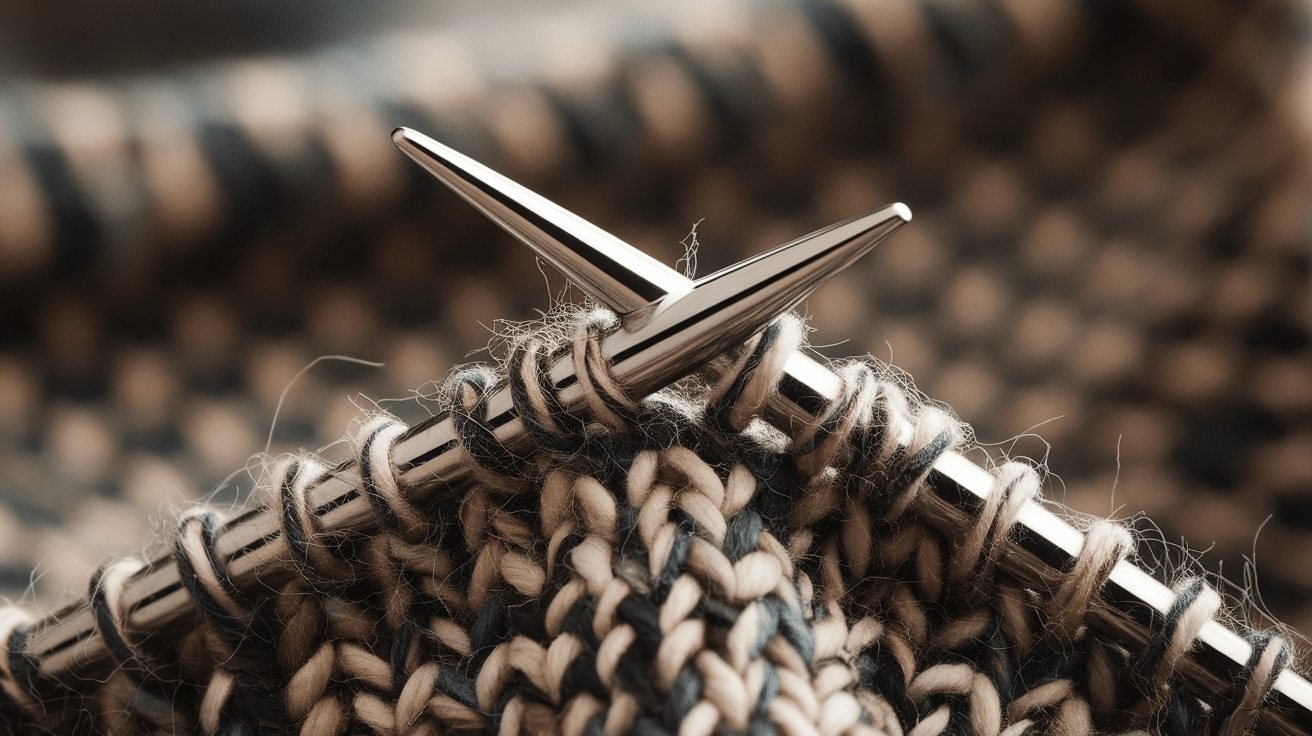
Fast and smooth. Metal needles let yarn glide effortlessly, making them ideal for knitting quickly. They also last a long time and don’t bend easily. If you like speed, these are for you.
Unique features:
- Best for fast knitters.
- Cool to the touch.
- It cannot be quiet.
3. Plastic
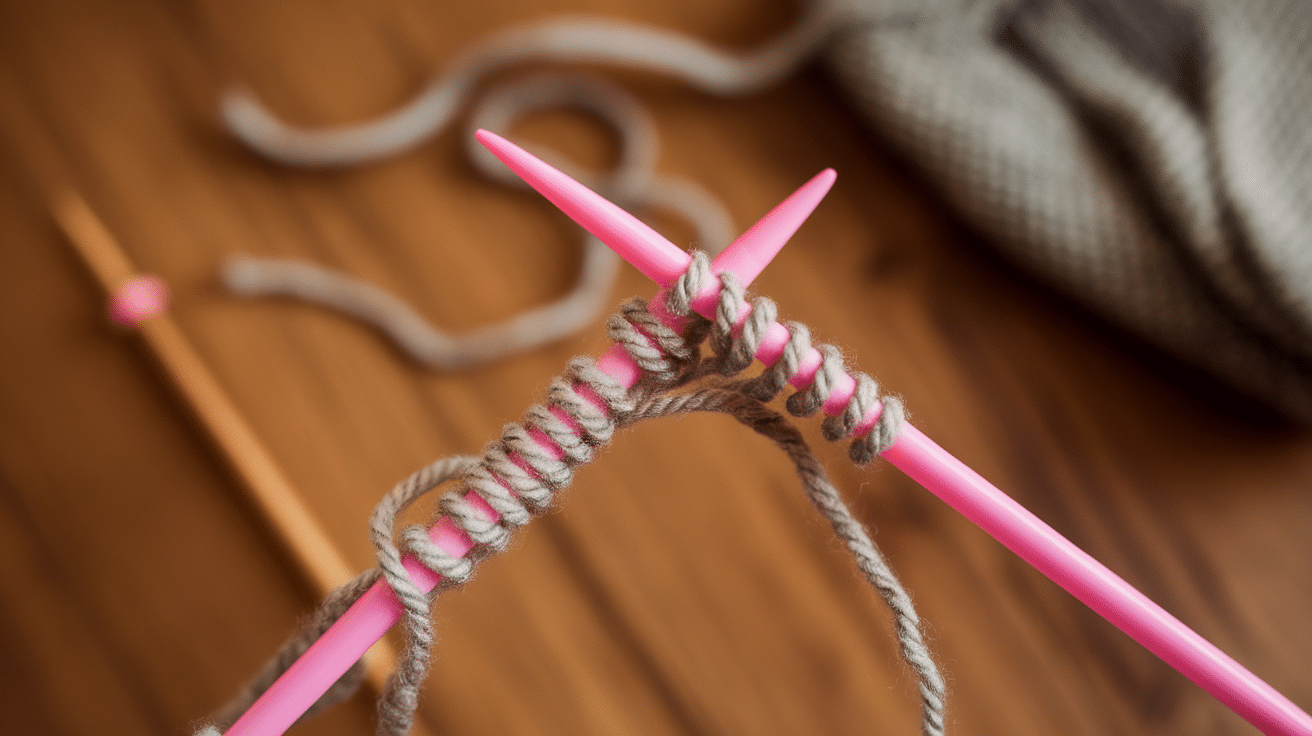
Plastic needles are lightweight and budget-friendly. They’re easy to find and flexible, making them comfortable. They’re a good middle ground—not too fast or slow.
Unique features:
- Great for all skill levels.
- Bend slightly for comfort.
- Not as durable as metal.
Each material has its pros and cons. Try different ones and see what feels best for you.
Choosing the Right Needle Size
The needle size you use in knitting can significantly affect the overall look, feel, and fit of your sweater. If the needle is too large, your stitches may appear loose and sloppy.
On the other hand, if the needle is too small, your sweater could end up stiff and tight. It’s essential to choose the right needle size for the yarn and project at hand.
Let’s see some key factors to consider when selecting the correct needle size for your sweater:
Yarn Weight
Every type of yarn comes with a recommended needle size. The weight of the yarn plays a significant role in determining the appropriate needle size.
Thicker yarn requires larger needles, and thinner yarn needs smaller needles. If the needle size doesn’t match the yarn weight, the stitches will not look right, and the sweater’s fit may be off.
Typical Yarn and Needle Pairings:
- Bulky yarn → Larger needles (US 10+)
- Worsted yarn → Medium needles (US 6-10)
- Fingering yarn → Small needles (US 1-4)
Common Needle Sizes for Sweater Knitting
When knitting sweaters, the yarn weight you use will directly impact the needle size. Most sweaters are made with worsted-weight yarn, which typically pairs well with US 6-10 needles.
If your sweater requires bulky yarn, you will likely need US 10+ needles. For lighter-weight yarns, consider using US 1-6 needles, depending on the exact yarn weight. Common Needle Size Range for Sweaters:
- Worsted weight yarn → US 6-10 needles
- Bulky-weight yarn → US 10+ needles
- Lighter weight yarn → US 1-6 needles
Tip: Always check the yarn label for a recommended needle size, as manufacturers often provide guidance on the best size to use.
Importance of Checking Pattern Recommendations
Knitting patterns generally suggest a specific needle size for the project. However, it’s important to remember that your knitting style may differ from the designer’s, so you must adjust the needle size accordingly. Some knitters tend to knit tighter, while others knit looser.
Key Steps:
- Follow the pattern’s suggested needle size as a starting point.
- Swatch your project before starting the actual sweater.
- Adjust the needle size if necessary to match the pattern’s gauge.
Interchangeable vs. Fixed Circular Needles
Circular needles are a must for sweater knitting. But should you get interchangeable or fixed ones? It depends on how often you knit, your projects, and how much you want to spend.
Interchangeable Circular Needles
These sets come with separate needle tips and cables that can be swapped out. They’re a great investment if you knit often and like flexibility.
| Pros | Cons |
|---|---|
| One set covers many projects. | More expensive upfront. |
| You can change needle sizes easily. | Connections can loosen while knitting. |
| Cords can be swapped for different lengths. | Some sets have stiff cables. |
Fixed Circular Needles
Fixed circulars have the needle tips permanently attached to the cable. They work best if you often use the same needle size or need one for a specific project.
When fixed needles work better
- If you mostly knit with one size.
- If you don’t want to deal with connecting pieces.
- If you prefer lighter, seamless needles.
Comparison Table
| Feature | Interchangeable Needles | Fixed Circular Needles |
|---|---|---|
| Cost | Higher upfront | Lower upfront |
| Flexibility | More options | One length per pair |
| Durability | It can loosen over time | No loose parts |
| Best for | Frequent knitters | Occasional knitters |
If you knit sweaters often, interchangeable needles give you more choices. But if you need one good pair of fixed needles, keep it simple.
Tips for Comfortable Knitting
Knitting a sweater takes time. If your hands hurt or your stitches feel off, it’s frustrating. The right tools and a few small changes can make a big difference.
1. Choose the Right Needle Length
Long needles can feel heavy. Short ones can feel cramped. The right length keeps your hands relaxed.
- For straight needles, go shorter if your hands get tired.
- For circular needles, pick a cable length that matches your project. Too short, and your stitches bunch up. They are too long, and they stretch.
2. Test Different Materials
Some needles are warmer, lighter, or smoother than others. Your hands will tell you what works best.
- Cold hands? Try bamboo for warmth.
- Tense grip? Metal needles might help stitches slide better.
- Sensitive joints? Plastic or wood can feel gentler.
3. Fix Loose or Tight Stitches
Uneven stitches can ruin a sweater. Here’s what to check:
- Too loose? Try smaller needles or tighten your grip slightly.
- Too tight? Relax your hands and practice looser wraps.
- Still struggling? Switch materials—metal speeds up stitches, and bamboo slows them down.
Small adjustments can make knitting more fun and less tiring. Try these tips and see what works for you.
Conclusion
When selecting the best knitting needles for your sweater projects, consider factors like needle type and material. Straight needles are perfect for flat knitting, while circular needles work wonders for seamless projects.
Double-pointed needles are great for small, round sections like sleeves. In terms of material, bamboo offers a gentle, slow grip, metal provides speed and smoothness, and plastic is a flexible, budget-friendly option.
Remember, there’s no one-size-fits-all answer. Experiment with different needles to find what feels most comfortable and suits your knitting style.
With the right tools, your knitting experience will be smoother and more enjoyable. Happy knitting!
Frequently Asked Questions
What Size Needles Are Best for Knitting a Sweater?
It depends on the yarn. Most sweater patterns use US 6-10 needles. Always check your pattern and do a gauge swatch before starting.
Are Circular Needles Better for Sweaters?
Yes, circular needles hold more stitches and let you knit in the round. They also reduce hand strain and work for both seamless and flat knitting.
Can I Use Straight Needles to Knit a Sweater?
Yes, but only for sweaters made in separate pieces. Straight needles work well for flat knitting but can feel heavy for large projects.


